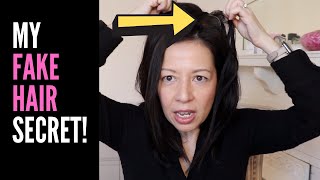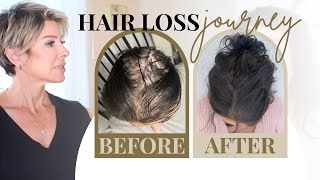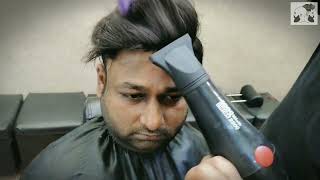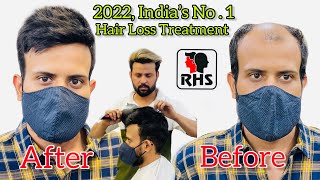What Cause Eyebrow Hair Loss?
- Posted on 22 August, 2021
- Hot Topic
- By SNY Admin
Some people are born with thick bushy eyebrows and those who are born with thin ones. Unfortunately, those who genetically have thin eyebrows have a higher chance of losing them. If that happens, you may resort to SMP for eyebrow as an option of resolving that problem. If you want to know more about the SMP procedure, and find this article helpful, visit the Scalp hairline International website to have the full picture of the Scalp Micropigmentation Process.
Eyebrow Hair Loss Causes
By narrowing down the cause, you and your doctor can find the right treatment to help prevent, reverse, or minimize hair loss. Specific causes for brow loss include:
Alopecia areata
The same autoimmune disease that is oftentimes responsible for scalp hair loss alopecia areata can also affect your eyebrows. In this case, your immune system mistakenly targets and attacks your eyebrow follicles, thereby slowing or halting eyebrow hair production.
According to the National Alopecia Areata Foundation (NAAF), alopecia can also affect fingernails and toenails. People often use minoxidil and corticosteroids together to treat alopecia areata.
Other autoimmune disorders may also result in eyebrow loss, such as the Graham-Little Syndrome, some forms of Lupus, localized scleroderma, and the Parry-Romberg syndrome.
Nutritional deficiencies
Nutritional deficiencies could also cause sparse brows. Your body requires certain nutrients to create healthy hair—a healthy balance of carbohydrates, proteins, fats, amino acids, vitamins, and minerals. The food a person eats has a substantial impact on their skin and hair health.
Since some of these nutrients sustain and influence hair growth, but nutrient deficiency could result in hair loss. For example, a deficiency of vitamins C, E, B-12, D, iron, cysteine, and/or omega-3 fatty acids could trigger hair loss, including in the eyebrows.
Dermatitis
Skin conditions, such as eczema and psoriasis can interfere with proper hair growth. Any dermatitis can block hair follicles from growing hair normally. Thinning brows are also a common side effect of other conditions such as atopic dermatitis (contact dermatitis), eczema, and Seborrheic dermatitis, which scientists believe is caused by a fungus or by an overproduction of oil in the skin, unlike Hansen’s disease caused by a bacterial infection.
A dermatologist can recommend medications and topical medication treatments to help.
Thyroid disease
The thyroid gland, located in the front of the neck, produces hormones that regulate your metabolism. When it produces too much or too little of a hormone, your body’s normal processes can be disrupted. Both overactive and underactive thyroid glands can lead to hair loss.
Other symptoms of thyroid disorders include dry, pale skin or moist, velvety skin swelling in the neck (a goiter ), coarse, dry, and brittle hair, a dry, itchy scalp thick, dry, brittle nails.
Excessive stress or anxiety
Psychological issues are known to contribute to eyebrow hair loss. If you have recently experienced a traumatic event or major lifestyle change, this may be the root cause.
Telogen effluvium (TE)
This refers to a temporary but dramatic loss of hair when your normal hair growth cycle is interrupted. This can be due to stress, changes in your diet, skin condition, medications, hormonal, or other changes in your body chemistry.
Over plucking
This practice creates minor trauma to the follicle, resulting in the hair no longer growing in that spot. Eyebrow hair follicles tend to be sensitive to removing the hair, so plan your brow shape and try not to get carried away tweezing.
Scar tissue
It can result from trauma, burns (chemical or thermal), and skin conditions typically involving problems with the immune system attacking the body’s tissues. This may be due to frontal fibrosing alopecia (where scarring and hair loss occur on the scalp and the eyebrow region for genetic, autoimmune, or environmental reasons).
Aging
Generally starting in our 40s, as levels of estrogen in women and testosterone in men dwindle, both genders may start to experience thinning of hair on the scalp and in the eyebrows as it is unfortunately natural to experience some hair in older age, due to an overall decline in hair follicle quality.
Chemotherapy
Chemo is specifically designed to affect all rapidly dividing cells, including hair follicles. Therefore, chemotherapy can stifle hair production in the brows.
Eyebrow Hair-Loss Prevention
If one or both brows are thinning, it could be due to infection, skin conditions, genetic conditions, hormonal changes, or an overactive immune system. Eat plenty of lean protein, fruits, and vegetables. Find ways to relax and reduce stress, such as massage or meditation.
Please resist the urge to over-pluck your eyebrows or use harsh chemicals near them. Protect your brows with a dab of Vaseline if you need to use hair bleach or dye, tretinoin (Retin-A), hydroquinone, or glycolic acids.
How Can I Get My Eyebrows Back?
Treatment options range from medications and creams to alternative therapies and cosmetic procedures. However, there are some things that you can do at home that may help you grow your eyebrows.
A balanced diet
Eating a healthy and balanced diet may help. Hair is mostly made up of proteins, and animal studies have shown that not getting enough protein can cause hair loss. Discover new workout ideas, healthy-eating recipes, makeup looks, skin-care advice, the best beauty products, and tips.
Iron
Iron deficiency anemia is a common cause of hair loss that can also affect the eyebrows. Getting enough iron in your diet may help your eyebrows grow faster. You can increase your iron intake by eating foods high in iron, such as iron-fortified cereals, white beans, and spinach.
Biotin
Biotin, which is also known as vitamin H, is part of the vitamin B family. Biotin supplements for hair growth have become very popular. Research on biotin for hair growth is limited, but there’s a small amount of evidence that increased biotin intake may promote growth.
Not getting enough biotin can result in Trusted Source thinning hair and a loss of body hair.
Avoid plucking, waxing, and threading.
We also see thinning eyebrows, especially in women, due to too much tweezing or waxing earlier in life. If the hair follicles suffer trauma and die out, as a result, a permanent thinning of the eyebrows can occur. If you want your eyebrows to grow back, you should avoid tweezing, waxing, or any other form of hair removal. This gives your eyebrow hairs the chance to grow fully.
Castor oil
There haven’t been many scientific studies to prove it can regrow hair, but the main compound in castor oil — ricinoleic acid — has been linked to hair regrowth. At the very least, it can keep your brows moisturized, which may help prevent breakage.
Eyebrow serums
There are some eyebrow serums available that are said to help eyebrows grow faster and thicker. While these claims haven’t been scientifically proven, they may still be worth a shot. However, it’s important to remember that frequent serums will help stimulate hair growth over time.
Bimatoprost (Latisse)
Latisse is a medication approved by the U.S. Food and Drug Administration (FDA) to promote eyelash growth that has shown promise as a way also to grow eyebrows. Though not yet approved for use on the eyebrows, there’s evidence that bimatoprost 0.03% solution can help regrow eyebrows when applied once or twice a day.
When to See Experts?
People may wish to see a doctor or healthcare professional if they notice sudden or unexplained hair loss in their eyebrows or elsewhere on the body. To do so, they will ask you about your medical history, perform a clinical examination on you.
They can diagnose the cause of hair loss, test for potential health conditions such as hormonal imbalances, and offer advice about the best treatments for hair regrowth.
Eyebrow Microblading
Topical treatments and cosmetic processes can also help restore hair growth. Microblading is a cosmetic tattooing procedure that fills in thin eyebrow areas to make them look fuller, unlike a traditional tattoo, which is a permanent solution to restoring thin brows. The coloring from microblading may last for up to 3 years. This is because microblading uses different tools and a smaller amount of pigment.
Eyebrow transplant restoration is similar to scalp hair replacement. It involves removing a section of skin from a location with ample hair and transplanting hair follicles to the sparse eyebrow area. Eyebrow transplants have been known to have exceptional results, particularly for alopecia. Studies show that 80% of patients with frontal fibrosing alopecia experienced “excellent hair growth” 6-12 months after the procedure.
Generally, you can expect a microblading session to cost (on average) around $400 to $600. This range is pretty consistent across the United States, and it’s worth mentioning that rates considerably less than this may be indicative of poor quality, so be sure to do your research.
The Bottom Line
As we have mentioned earlier in this article, some people have naturally thin eyebrows. That is why you have to understand understanding the cause of thinning eyebrows before making a judgment call. Diagnosing eyebrow loss is very important, to know the exact cause of your eyebrow loss, as treatment is dependent on it. Once you and your doctor determine the cause of your eyebrow hair loss, you can choose the most appropriate treatment.




